Dashavatara (/?dæ???væt?r?/; Sanskrit: ???????, da??vat?ra) refers to the ten primary avatars of Vishnu, the Hindu god of preservation. Vishnu is said to descend in form of an avatar to restore cosmic order. The word Dashavatara derives from da?a, meaning 'ten', and avatar (avat?ra), roughly equivalent to 'incarnation'.
The list of included avatars varies across sects and regions, and no list can be uncontroversially presented as standard. However, most draw from the following set of figures, omitting at least one of those listed in parentheses: Matsya, Kurma, Varaha, Narasimha, Vamana, Parashurama, Rama, Krishna, Buddha and Kalki. In traditions that omit Krishna, he often replaces Vishnu as the source of all avatars. Some traditions include a regional deity such as Vithoba or Jagannath in penultimate position, replacing Krishna or Shree Chaitanya Mahaprabhu.
The order of the ancient concept of Dashavataras has been interpreted to be reflective of modern Darwinian evolution.
Contents
Description
The list of avatars in the Dashavatara varies by region. The following table summarises the position of avatars within the Dashavatara in many but not all traditions. A number in the table indicates the position of the corresponding avatar within the Dashavatara. Two or more numbers separated by commas indicate that the position of the corresponding avatar within the Dashavatara varies between traditions. Bracketed numbers indicate that the corresponding avatar is omitted in some traditions.
| Avatar | Position | Yuga |
|---|---|---|
| Matsya | 1 | Satya Yuga |
| Kurma | 2 | |
| Varaha | 3 | |
| Narasimha | 4 | |
| Vamana | 5 | Treta Yuga |
| Parashurama | 6 | |
| Rama | 7 | |
| Krishna | 8 | Dwapara Yuga |
| Buddha | 9 | Kali Yuga |
| Kalki | 10 |
Etymology
The word Dashavatara derives from da?a, meaning 'ten' and avatar (avat?ra), meaning 'incarnation'.
Number of occurrences of these avatars of lord Vishnu are one less than the total number of avatars in previous yuga.
Satya Yuga - Had 4 (Matsya, Kurma, Varaha, Narasimha)
Treta Yuga - Had 3 (Vamana, Parshurama, Rama)
Dvapara Yuga- Had 1 (Krishna)
Kali Yuga- Had 1, Yet to have 1 (Buddha, Kalki)
List
- Matsya, the fish. Vishnu takes the form of a fish to save Manu from the deluge (Pralaya), after which he takes his boat to the new world along with one of every species of plant and animal, gathered in a massive cyclone.
- Kurma, the giant tortoise. When the devas and asuras were churning the Ocean of milk in order to get Amrita, the nectar of immortality, the mount Mandara they were using as the churning staff started to sink and Vishnu took the form of a tortoise to bear the weight of the mountain.
- Varaha, the boar. He appeared to defeat Hiranyaksha, a demon who had taken the Earth, or Prithvi, and carried it to the bottom of what is described as the cosmic ocean(much like in ether theory) in the story. The battle between Varaha and Hiranyaksha is believed to have lasted for a thousand years, which the former finally won. Varaha carried the Earth out of the ocean between his tusks and restored it to its place in the universe.
- Narasimha, the half-man/half-lion. The rakshasa (Demon) Hiranyakashipu, the elder brother of Hiranyaksha, was granted a powerful boon from brahma, not allowing him to be killed by man or animal, inside or out, day or night, on earth or the stars, with a weapon either living or inanimate. Vishnu descended as an anthropomorphic incarnation, with the body of a man and head and claws of a lion. He then disembowels the rakshasa at the courtyard threshold of his house, at dusk, with his claws, while he lay on his thighs.
- Vamana, the dwarf. The fourth descendant of Hiranyakashyap, Bali, with devotion and penance was able to defeat Indra, the god of firmament. This humbled the other deities and extended his authority over the three worlds. The gods appealed to Vishnu for protection and he descended as a boy Vamana. During a yajna (????) of the king, Vamana approached him and Bali promised him for whatever he asked. Vamana asked for three paces of land. Bali agreed, and the dwarf then changed his size to that of a giant. He stepped over heaven in his first stride, and the netherworld with the second. Bali realized that Vamana was Vishnu incarnate. In deference, the king offered his head as the third place for Vamana to place his foot. The avatar did so and thus granted Bali immortality. Then in appreciation to Bali and his grandfather Prahlada, Vamana made him ruler of Pathala, the netherworld.
- Parashurama, the warrior with the axe. He is son of Jamadagni and Renuka and received an axe after a penance to Shiva. He is the first Brahmin-Kshatriya in Hinduism, or saint-warrior, with duties between a Brahmin and a Kshatriya. King Kartavirya Arjuna and his army visited the father of Parashurama at his ashram, and the saint was able to feed them with the divine cow Kamadhenu. The king demanded the cow, but Jamadagni refused. Enraged, the king took it by force and destroyed the ashram. Parashurama then killed the king at his palace and destroyed his army. In revenge, the sons of Kartavirya killed Jamadagni. Parashurama took a vow to kill every Kshatriya on earth twenty-one times over, and filled five lakes with their blood. Ultimately, his grandfather, rishi Rucheeka, appeared before him and made him halt. He is a Chiranjivi (immortal), and believed to be alive today in penance at Mahendragiri.
- Rama, the prince and king of Ayodhya. He is a commonly worshipped avatar in Hinduism, and is thought of as the ideal heroic man. His story is recounted in one of the most widely read scriptures of Hinduism, the Ramayana. While in exile from his own kingdom with his brother Lakshman, his wife Sita was abducted by the demon king of Lanka, ??Ravana??.On his way to rescue Sita, he meets Hanuman. The trio, along with the Vanara Sena (army of apes) travelles to Lanka, kills Ravana and rescues Sita.
- Balarama, the elder brother of Krishna, is regarded generally as an avatar of Shesha. However, Balarama is included as the eighth avatar of Vishnu in the Sri Vaishnava lists, where Buddha is omitted and Krishna appears as the ninth avatar in this list. He is particularly included in the lists where Krishna is removed and becomes the source of all.
- Krishna was the eighth son of Devaki and Vasudeva. A frequently worshipped deity in Hinduism, he is the hero of various legends and embodies qualities such as love and playfulness. One of the most famous accounts of the feats of Krishna is the killing of his tyrant uncle Kansa in his early youth. He is a central character in the Mahabharata, the Bhagavata Purana and the Bhagavad Gita, and is mentioned in many Hindu philosophical, theological, and mythological texts.
- Buddha: Gautama Buddha, the founder of Buddhism, is commonly included as an avatar of Vishnu in Hinduism. Buddha is sometimes depicted in Hindu scriptures as a preacher who deludes and leads demons and heretics away from the path of the Vedic scriptures, but another view praises him a compassionate teacher who preached the path of ahimsa (non-violence).
- Kalki is described as the final incarnation of Vishnu, who appears at the end of each Kali Yuga. He will be atop a white horse and his sword will be drawn, blazing like a comet. He appears when only chaos, evil and persecution prevails, dharma has vanished, and he ends the kali yuga to restart Satya Yuga and another cycle of existence.
Historical development
Various versions of the list of Vishnu's avatars exist. Some lists mention Krishna as the eighth avatar and the Buddha as the ninth avatar, while others – such as the Yatindramatadipika, a 17th-century summary of Srivaisnava doctrine – give Balarama as the eighth avatar and Krishna as the ninth. The latter version is followed by some Vaishnavas who don't accept the Buddha as an incarnation of Vishnu.
Buddha
The adoption of Buddha as one of the avatars of Vishnu under Bhagavatism was a catalyzing factor in assimilation during the Gupta period between 330 and 550 CE. By the 8th century CE, the Buddha was declared an avatar of Vishnu in several Puranas. The mythologies of the Buddha and Vishnu share a number of structural and substantial similarities, which contributed to the assimilation of the Buddha as an avatar of Vishnu. This assimilation is indicative of the Hindu ambivalence toward the Buddha and Buddhism. Conversely, Vishnu has also been assimilated into Sinhalese Buddhist culture, and Mahayana Buddhism is sometimes called Buddha-Bhagavatism. By this period, the concept of Dashavatara was fully developed.
Regional versions
In Maharashtra and Goa, Vithoba's image replaces Buddha as the ninth avatar of Vishnu in some temple sculptures and Hindu astrological almanacs. In certain Oriya literary creations from Orissa, Jagannath has been treated as the Ninth avatar, by substituting Buddha.
Krishna
Jayadeva, in his Pralaya Payodhi Jale from the Gita Govinda, includes Balarama and Buddha where Krishna is equated with Vishnu and the source of all avatars.
In traditions that emphasize the Bhagavata Purana, Krishna is the original Supreme Personality of Godhead, from whom everything else emanates. Gaudiya Vaishnavas worship Krishna as Svayam Bhagavan, or source of the incarnations. The Vallabha Sampradaya and Nimbarka Sampradaya, (philosophical schools) go even further, worshiping Krishna not only as the source of other incarnations, but also Vishnu himself, related to descriptions in the Bhagavata Purana. Mahanubhavas also known as the Jai Kishani Panth, considers Lord Krishna as the su
Watch movie Dashavatar online on Amazon
Watch movie Dashavatar online
Watch The Movie On PrimeGhar Ka Sukh Full HD Movie Download

Daddy Cool Full HD Movie Download

Aarop Full HD Movie Download

Swarg Full HD Movie Download

Shaadi Ke Baad Full HD Movie Download
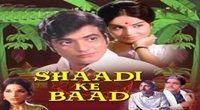
Laawaris Full HD Movie Download

I Hate Luv Storys Full HD Movie Download

Hathkadi (1982) Full HD Movie Download
.jpg)
Shiva Dada Full HD Movie Download
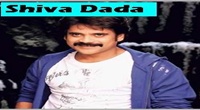
Rock Climber Full HD Movie Download
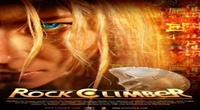
Sri Parameswari Mahimalu Full HD Movie Download
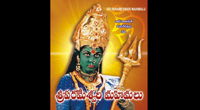
Bikini Bloodbath Full HD Movie Download

Edegarike Full HD Movie Download
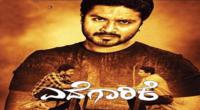
Pooveli Full HD Movie Download

RocknRolla Full HD Movie Download

Love Game Full HD Movie Download
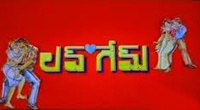
Police Ante Veederaa Full HD Movie Download
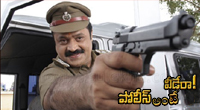
Bhale Krishnadu Full HD Movie Download
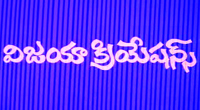
Toli Parichayam Full HD Movie Download
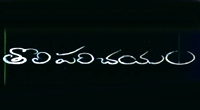
Alumogalu Full HD Movie Download
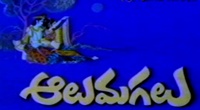
Mujhse Fraaandship Karoge Full HD Movie Download

Download latest Movie from bollywood
- 1> baaghi 3
- 2> THE SKY IS PINK MOVIE FULL STORY AND REVIEW
- 3> Luka Chuppi
- 4> TO ALL THE BOYS I’VE LOVED BEFORE
- 5> Kabir Singh
- 6> Street Dancer 3D
- 7> Simmba
- 8> Gone Girl
- 9> The Girl Who Lived
- 10> Ludo
- 11> DILWALE DULHANIA LE JAYENGE
- 12> GUILTY
- 13> The Godfather
- 14> Adventures of Rusty
- 15> Sooryavanshi
- 16> Satyameva Jayate 2
- 17> Thappad
- 18> Bhool Bhulaiyaa 2
- 19> KGFChapter 2
- 20> Mardaani 2
- 21> Pinjar
- 22> Shivaji maharaj
- 23> Ek Villian 2
- 24> Hungama 2
- 25> Divergent
- 26> Mumbai Saga
- 27> The Internship
- 28> HIT (telugu)
- 29> Panga
- 30> The perfect date
- 31> 16 December
- 32> Gopala Gopala (Telugu)
- 33> Brahmastra
- 34> Gangubai Kathiawadi
- 35> Manmadhudu
- 36> Nenu local
- 37> Mahanati
- 38> Shatamanam bavathi
- 39> Lagaan
- 40> After
- 41> MOM
- 42> Shamshera
- 43> Raguvaran BTech
- 44> Khakee
- 45> The villain
- 46> OM
- 47> Mr. perfect
- 48> Bueatifull mind
- 49> Hichki
- 50> Gabbar Singh
- 51> Jogi
- 52> Before Sunrise
- 53> Before Sunset
- 54> Before Midnight
- 55> The Big Bull
- 56> Top Gun: Maverick
- 57> The Purge
- 58> The Sky is Pink
- 59> Laxmmi Bomb
- 60> Sadak 2
- 61> Sufna
- 62> Prithviraj
- 63> PK
- 64> Coolie No 1(2020)
- 65> Black Widow
- 66> Dear Zindagi
- 67> Dil Bechara
- 68> PHIR HERA PHERI
- 69> WAR
- 70> Dostana
- 71> RRR: Roudram Ranam Rudhiram
- 72> Maidan
- 73> Dabbang 3
- 74> Chhalaang
- 75> life as we know it
- 76> SherShaah
- 77> Sandeep Aur Pinky Faraar
- 78> Event Horizon
- 79> 83
- 80> Radhe: Your Most Wanted Bhai
- 81> Gunjan Saxena: The Kargil Girl
- 82> Mr India
- 83> Vivah
- 84> Anokha Bandhan
- 85> Ghost
- 86> Bhoot: Part One - The Haunted Ship
- 87> Haseen Dilruba
- 88> Laal Singh Chaddha
- 89> Qismat
- 90> Rajput
- 91> Drive
- 92> Dil Chahta Hai
- 93> Dil Ki Baazi
- 94> Dil Ka Rishta
- 95> Teesri Manzil
- 96> Dil
- 97> Love Aaj Kal
- 98> Khaali Peeli
- 99> Bunty Aur Babli 2
- 100> Atrangi Re
- 101> Gulabo Sitabo
- 102> Jodi
- 103> Suraj Pe Mangal Bhari
- 104> Deewana
- 105> Attack
- 106> Sardar Udham Singh
- 107> Toofan
- 108> THE LOVEBIRDS
- 109> Jersey
- 110> Ginny Weds Sunny
- 111> Thalaivi
- 112> Shiddat
- 113> Angels vs Zombies
- 114> Koi Mil Gya
- 115> Thank God
- 116> Bhuj: The Pride of India
- 117> Hum Aapke Hain Kaun
- 118> The Platform
- 119> Bird Box
- 120> Roohi Afzana
- 121> Torbaaz
- 122> Nikamma
- 123> World War Z
- 124> Extraction
- 125> Train to Busan
- 126> Life of Pi
- 127> SHAADI MEIN JROOR AANA
- 128> Himmat Aur Mehnat
- 129> To All The Boys: P.S. I Still Love You
- 130> Mimi
- 131> Good Newwz
- 132> Shubh Mangal Zyada Saavdhan
- 133> Raabta
- 134> Harry Potter and the Philosopher's Stone
- 135> Harry Potter and the Chamber of Secrets
- 136> Chhapaak
- 137> War of the Worlds
- 138> Harry Potter and the Prisoner of Azkaban
- 139> Harry Potter and the Goblet of Fire
- 140> MURDER MYSTERY
- 141> Shakuntala Devi
- 142> Bachchan Pandey
- 143> Jayeshbhai Jordar
- 144> Sheer Qorma
- 145> Saina
- 146> 'O' Pushpa I hate tears
- 147> Kedarnath
- 148> MS Dhoni The Untold Story
- 149> Chhichhore
- 150> Badhaai Ho
- 151> Unstoppable
- 152> Oz the Great And Powerful
- 153> The Girl on the Train
- 154> Haathi Mere Saathi 2020
- 155> The Conjuring: The Devil Made Me Do It
- 156> Gandhi Se Pehle Gandhi
- 157> The Song of Scorpions
- 158> Srimanthudu
- 159> Hello Guru Prema Kosame
- 160> Beauty and The Beast
- 161> Black Panther
- 162> Charlie and the Chocolate Factory
- 163> Bole Chudiyan
- 164> Fidaa
- 165> Duvvada Jagannadham
- 166> Bruce Lee: The Fighter
- 167> Hyper
- 168> Yaara
- 169> Red (2020)
- 170> Shivam
- 171> That Is Mahalakshmi
- 172> Nishabdham
- 173> Aashram 2020 web series
- 174> Laxmii
- 175> Mismatched
- 176> STUDENT OF THE YEAR 2
- 177> NAIL POLISH
- 178> Ramprasad Ki Tehrvi
- 179> KAAGAZ
- 180> 12 o Clock
- 181> The Power
- 182> bolo hau
- 183> Tribhanga
- 184> JAMUN
- 185> Madam Chief Minister
- 186> Maasaab
- 187> Aadhaar
- 188> Tanhaji
- 189> Bhaagi 3
- 190> Bhootnath
- 191> MALANG
- 192> Jai Mummy Di
- 193> Haathi Mere Saathi 2021
- 194> Shakeela
- 195> Unpaused
- 196> Annayya
- 197> Vamsoddharakudu
- 198> Mrugaraju
- 199> Narasimha Naidu
- 200> Sankranti
- 201> Manasu Maata Vinadhu
- 202> Anjaane
- 203> Apaharan
- 204> Bachke Rehna Re Baba
- 205> Bewafaa
- 206> Roohi
- 207> Radhe
- 208> Zindagi Khoobsoorat Hai
- 209> Yeh Mohabbat Hai
- 210> Yeh Kya Ho Raha Hai?
- 211> The Tomorrow War
- 212> DehradunDiary
- 213> Meri Shaadi Karaoo
- 214> Matruu Ki Bijlee Ka Mandola
- 215> No One Killed Jesica
- 216> Aag Ka Goola
- 217> Eight Million Dollars
- 218> Three Hundred
- 219> Cats and Dog
- 220> Decoy
- 221> Gold Rush
- 222> You Have Got Mail
- 223> Final Destination three
- 224> Tofan
- 225> Jungle
